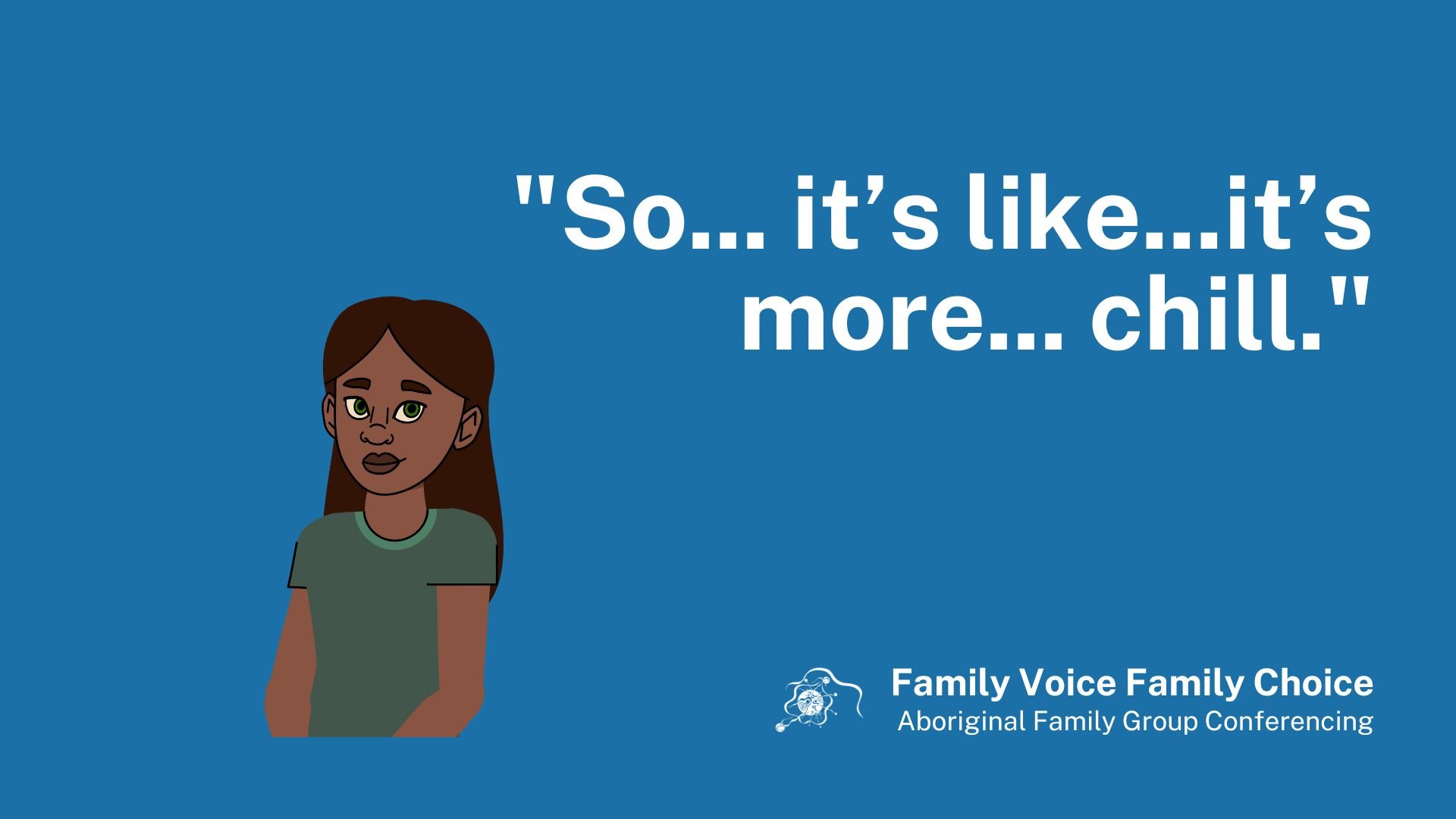This page has been written for families. If you are a service provider please visit here.
A family’s story.
Over the years many families have participated in Aboriginal Family Group Conferencing. This is a true family story.
Voice, truth, culture.
Coming together, talking, sharing, connecting - it’s how we solve problems and make sure Aboriginal children are connected to Aboriginal culture at all times.
Family Voice Family Choice.
-
AFGC brings together family, kin, and community to make decisions about the care and protection of children. This approach acknowledges that families are often better equipped than government agencies to make plans for their children's safety and well-being. It recognises the importance of community involvement and Aboriginal voices in decision-making, which have long been ignored in colonial/western child protection models.
-
AACAFS is an Aboriginal owned and operated charity. Our leadership team has deep experience in child and family services. We are Aboriginal people supporting Aboriginal people.
The AACAFS Family Voice Family Choice Program implements a unique approach to AFGC, incorporating the voices and choices of Aboriginal families. This program recognises that Aboriginal families are best equipped to make decisions for their children and creates a platform for meaningful and purposeful engagement in decision-making processes.
Our program ensures that cultural values and practices are respected and integrated into the decision-making process, empowering Aboriginal families to reclaim cultural identity and actively take part in decisions about children.
-
The AFGC process is grounded in Aboriginal cultural values and practices. It honors the principles of self-determination, community responsibility, and collective decision-making. By embracing this method, Aboriginal families can reclaim their power and autonomy in decision-making processes concerning their children and young people.
-
Aboriginal children are the primary beneficiaries of AFGC. This approach prioritises their well-being by involving the child or young person in decisions that directly affect their lives. It provides them with a platform to have their voices heard and contributes to building their self-esteem, resilience, and sense of involvement.
-
AFGC has many benefits for Aboriginal families and communities. It promotes cultural authenticity, allowing families to make decisions based on their values, traditions, and community norms. This process strengthens family bonds and connections by involving extended kinship networks in decision-making. It empowers families to take ownership of their situations and find solutions that work, whilst keeping a sense of autonomy and self-determination.
-
AFGC is most effective when used early in the child protection process, preferably before formal court proceedings. This allows for a more inclusive and collaborative approach to decision-making, reducing the need for court intervention and the potential removal of children from their families.
AFGC can also be utilised at any stage of the child protection process, including during ongoing support, restoration and reunification after a child has been removed. In these cases, AFGC can be used as a tool for healing and repairing relationships between the family and child protection services.
-
The AFGC process involves bringing together family, kin and community together with relevant service providers to develop a plan for the care and protection of a child or young person. The conference is usually led by an independent facilitator trained in respectful, inclusive group conferencing including conflict resolution.
During the conference, everyone can share their perspectives, identify strengths and needs, and collectively develop a plan that respects the cultural safety, values and beliefs of the family. The conference also provides a safe space for open communication, healing, and reconciliation.
Once a plan is developed and agreed upon by everyone, it is then implemented with ongoing support from the service providers involved.
This approach acknowledges and empowers families to take an active role in decision-making and service provision, leading to more effective outcomes.






